A well-rounded cookware collection will look different to different people. With a wide variety of cookware styles, materials, and prices—from cast iron and stainless steel to aluminum and copper—it’s wise to fully understand the differences between cookware set materials, how they work, and their pros and cons. As a tip, visit imarku for an in-depth look at pots and pans. Picking the right pots and pans is easy.
The Difference Between Cookware Set Materials
Stainless Steel Cookware
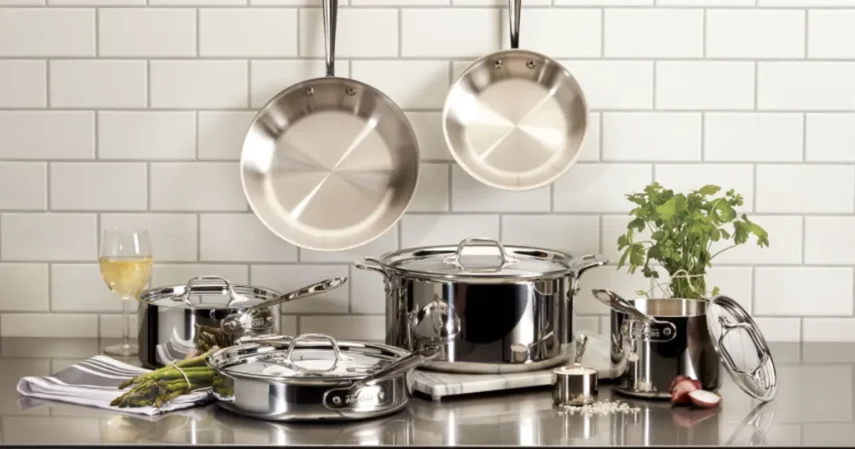
Stainless steel pots and pans are versatile and will not react with any ingredients or other materials used in cooking. It’s strong, functional, and there’s no doubting its durability. This is why most people prefer this type of cooker because of its efficiency and how quickly it conducts heat. Cleaning stainless steel pots and pans is also not a problem as it won’t scratch or dent. It works equally well on many types of stoves or cooktops. Click here to learn more about electric stove-compatible cookware set.
Stainless steel has a non-stick surface – just what you need to poach your eggs. The only downside to stainless steel is that it is a poor conductor of heat. Thankfully, most manufacturers add layers of highly conductive metals like copper and aluminum. The tradeoff is that stainless steel is low maintenance and definitely worth the money.
To clean your cookware, all you need is some soap and water. For burnt stains, fill a burnt pot with water and boil for a few minutes. Once loosened, you should scrape with a wooden spoon. For more stubborn stains, you can use stainless steel cleaner or baking soda.
Cast Iron Cookware
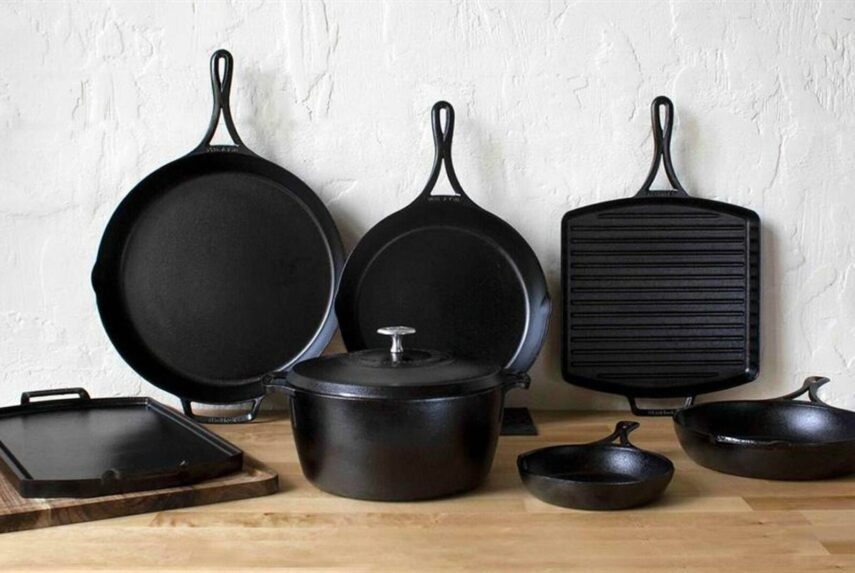
You probably know that cast iron is heavy. Also, it requires some maintenance. Cast iron does not conduct electricity well. Heating and cooling takes time. However, it also has many positive sides. The material is super durable, you can use it for a long time. Plus, it won’t chip, warp, or dent easily.
Cast iron is available in natural material or enamel coating. Natural ones are cheaper. However, it needs to be seasoned to prevent rust. This is the material to use if you want a heavier set of cookware.
Aluminum Cookware
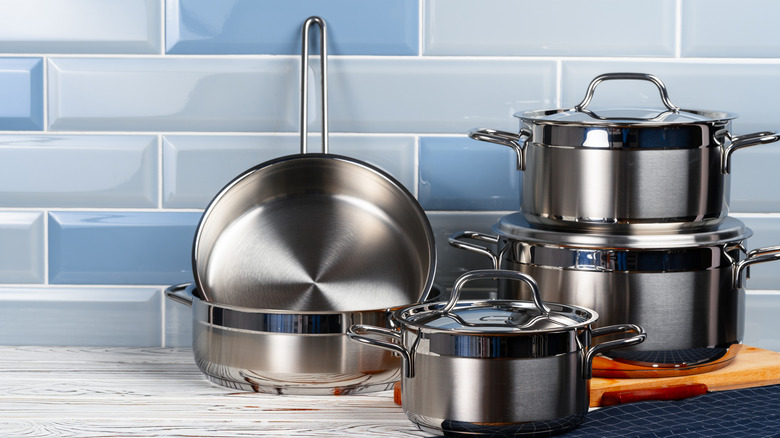
Like the previous one, aluminum has good thermal conductivity. It is second only to copper in terms of thermal conductivity. However, you can experience food reactions to acidic foods. This will result in undesirable color and taste. However, you can get the one with a nonstick coated lining. This will prevent food reactions and ensure long-lasting results. In addition, this material is very light.
Copper Cookware
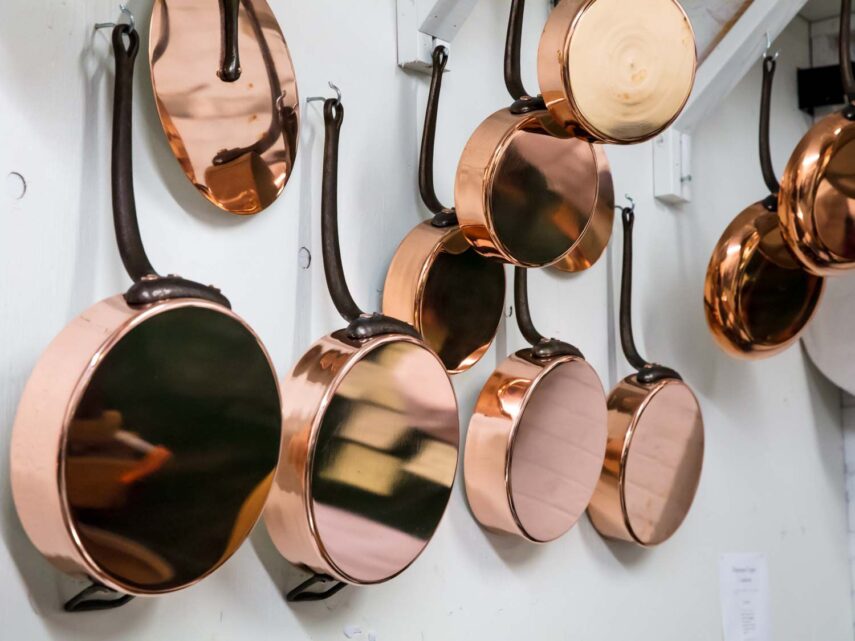
Copper cookware is not only loved by professional chefs, but also by many consumers. It’s a good conductor of heat, which means it’s very sensitive to heat, which helps shorten cooking times.
While most people prefer frying or sautéing with this cooker, it’s also the best choice for any other cooking technique. They line copper cookware with silver, stainless steel, or tin so that it’s safe when it comes into contact with any food ingredient that would impart a metallic taste.
Nonstick Cookware
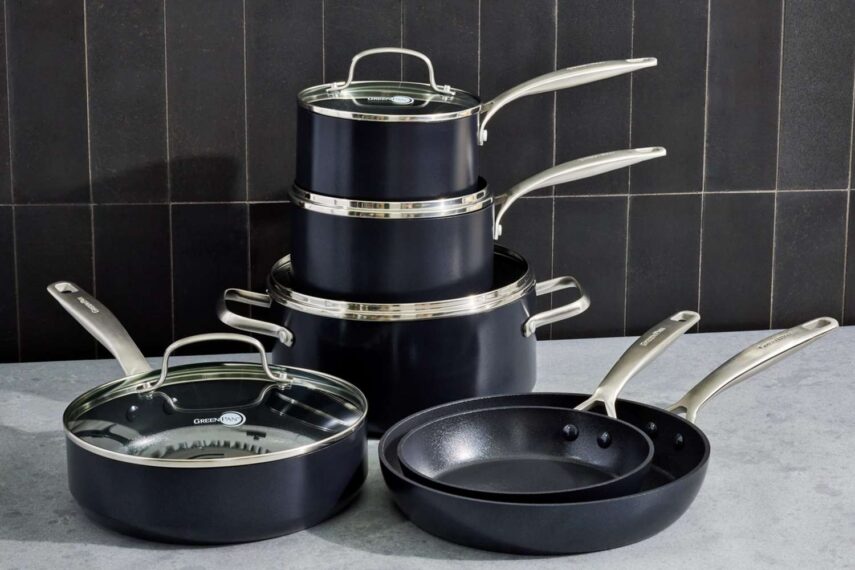
Today, PTFE is used in many different types of cookware, from frying pans to griddle pans and waffle irons. The reason they work so well is relatively simple. If you look at a metal pan under a magnifying glass, you’ll see that the surface is far less smooth than it appears to be. It is rugged and full of many small crevices. During cooking, the pot is heated, causing it to expand. As the pot expands, the pores become larger and food can seep into them. The food is then cooked so that it sticks together.
When we cook, we oil our metal pans because the oil fills the gaps in the metal to keep food out of them, reducing sticking. Nonstick pans, however, are coated with Teflon, which then fills the pores of the pan to create a smooth, nonstick cooking surface. The result is that the food falls off the surface as soon as it is cooked.
When the cookware became available to consumers, it quickly became popular because it prevented food from sticking and was uncomplicated to clean. Since no oil is required, it becomes a healthy cookware that does not require any fat during the cooking process.
Nonstick pots and pans are made of Teflon or Teflon. But there has been some controversy due to rumors that the coating can flake off and become dangerous if ingested.
6 Factors to Consider Before Buying a Cookware Set
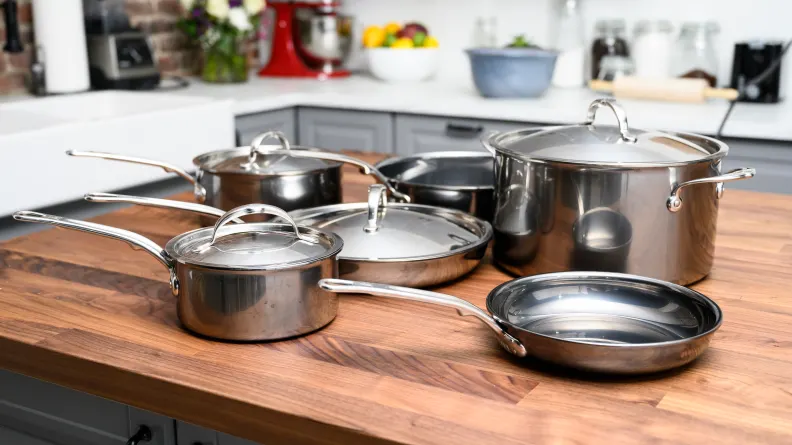
1. Design and Durability
When it comes to design, the first thing that comes to mind is how easy these pans and pans are to handle. In addition, other aspects must be considered, such as the fit of the cover or the comfort of the handle.
Also, their ability to pour without dripping is also important, as is their appearance. While the durability of stainless steel is undeniable, it’s best to evaluate the quality of your cookware when purchasing.
2. Handles
The handle needs to feel comfortable in the hand. You want cookware that feels comfortable in your hand and is sturdy. If the handle is uncomfortable, you can’t hold it for a long time. Also, if the material is not user-friendly, you may not like to use your cooker very often. Therefore, you must check the material and design of the handle.
3.Heating performance
Certain factors such as how the cookware conducts heat, how evenly it heats, how long it takes to hold heat, or the quality of the internal heating core are critical. Heating performance indicates the overall quality of the cookware.
4. The perfect suit
We try to pick products that offer you the best value. Individual dimensions may vary between sets of the same brand. So whenever shopping for the right cookware, check the dimensions of the pieces.
5. Dishwasher and oven safe
You probably know that all cookware sets have some specific requirements. Yes, you can save your energy and time by using dishwasher safe materials. Another consideration is oven safety. If the cookware set is oven-ready, you can use it on the oven.
6. Warranty and annual cost of use
Another important thing to do is to check the warranty coverage and how to honor the warranty after purchasing the cooker from the manufacturer. Next is the annual usage cost.
Related Posts:
- How to Choose A CPU Cooler? - Guide to Buy Right…
- Dating After 50 is Not an Issue! Come and Find Your…
- How to Find the Best Underwear for Men: A Guide to…
- How to Escape the Concrete Jungle and Find Your Way…
- How Hard Is It to Choose the Right Bella and Canvas Shirts?
- #5 Best Websites to Buy Spotify Plays in 2024







